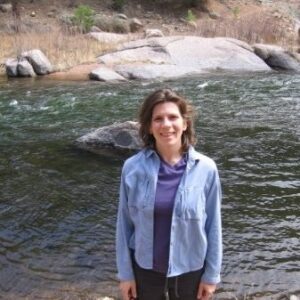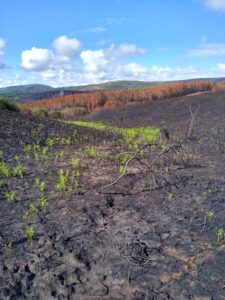Wildfires are a fundamental aspect of life in Colorado. As a result, people across a wide range of industries – including here at Colorado State University – are continuously working to build wildfire resilience in their communities.
Dr. Stephanie Kampf, a professor in CSU’s Department of Ecosystem Science and Sustainability, examines how water runoff is affected by climate, landscape characteristics and landscape disturbances, like wildfires.
During the 2022 – 2023 academic year, Kampf received a Fulbright Global Scholar Award and traveled to Spain, Chile and Argentina to expand her research.
Kampf’s work during her time as a Fulbright Global Scholar was inspired by her research in Colorado on wildfire impacts on hydrology.
“I wanted to investigate how fires have affected streamflow in these countries and learn how land managers address problems with erosion and sedimentation after a fire,” said Kampf. “The streamflow component proved to be difficult to address in the other countries due to lack of data, so I focused instead on historical wildfire patterns and how they relate to climate and other factors in each region.”
The shift to focusing on historical wildfire patterns still allowed Kampf the opportunity to explore erosion and sediment management opportunities.
In the countries Kampf visited, there was very little evidence of the severe post-fire flooding, erosion and debris flows that have been common hazards after fires in Colorado.

Kampf said, “In Spain, erosion after a fire can be a problem, and researchers there have shown that applying straw mulch is effective in reducing erosion.”
While in Spain, Kampf visited the region of Galicia. There, she was hosted by the researcher Cristina Fernandez, who leads a group responsible for evaluating each fire and recommending if and where mulch should be applied. This group has a strong post-fire assessment system, but limited team capacity makes it more challenging to keep up with the amount of work there is to do.
Much of the post-fire erosion in Galicia happens during the area’s rainy winter season, which contrasts with the summer thunderstorms that occur in Colorado. “The wet winters in Galicia allow the vegetation to return quickly, so the post-fire erosion problems don’t last long,” Kampf added.
Kampf shares that neither Chile nor Argentina has a centralized post-fire management system. Interestingly, even these areas seemed to have less erosion than Colorado.
“Many of the fires in Chile have burned pine and eucalyptus plantation forests, which are extremely widespread in central-southern Chile,” said Kampf. “I visited one fire where there was an attempt to restore native vegetation after a fire.”
Southern Chile’s climate is similar to Galicia, with dry summers and wet winters allowing vegetation to grow quickly after a fire, but drier conditions in central Chile can hinder vegetation recovery.
In Argentina, many forest fires have occurred on National Park lands. Here, researchers at a government agency similar to the Forest Service assess the burn severity and evaluate whether there are areas of concern for management. The Park Service will then assess which burned areas need to be protected from cattle grazing so that the vegetation can recover.
While there’s no clear solution to post-fire erosion management, Kampf’s work from the Fulbright Scholar program will provide important insights into the effectiveness of different methods used around the world.